- Choosing the Right Plants for Your Balcony Garden
- 1. Sunlight
- 2. Space
- 3. Container Size
- 4. Watering Needs
- 5. Companion Planting
- 6. Personal Preferences
- Preparing the Balcony for Planting
- 1. Assess the amount of sunlight
- 2. Clean the balcony
- 3. Check the drainage
- 4. Consider the weight
- 5. Prepare the soil
- 6. Arrange the plant containers
- 7. Provide support
- Providing Adequate Sunlight for Your Plants
- 1. Choosing the Right Location
- 2. Orienting Your Plants
- 3. Using Reflective Surfaces
- 4. Rotating Your Containers
- 5. Providing Shade During Hot Afternoons
- 6. Supplementing with Artificial Light
- Choosing the Right Containers for Your Plants
- Size:
- Material:
- Drainage:
- Mobility:
- Number of Plants:
- Watering and Fertilizing Your Balcony Garden
- Watering Tips
- Fertilizing Tips
- Additional Tips
- Pruning and Maintaining Your Plants
- 1. Regular Watering:
- 2. Fertilizing:
- 3. Pruning Tomato Plants:
- 4. Pruning Pepper Plants:
- 5. Training Cucumber Plants:
- 6. Harvesting Herbs:
- Dealing with Pests and Diseases
- 1. Prevention
- 2. Natural Pest Control
- 3. Common Diseases
- Harvesting and Enjoying Your Balcony Garden
- Harvesting Tomatoes, Peppers, and Cucumbers:
- Harvesting Herbs:
- Enjoying Your Harvest:
- “Question-Answer”
- Can I grow tomatoes on my balcony?
- What is the best way to start growing peppers on my balcony?
- Can I grow cucumbers on a small balcony?
- What are some herbs that can be grown on a balcony?
- Do tomatoes need a lot of sunlight?
- How often should I water my peppers and tomatoes on the balcony?
- Can I use regular garden soil for growing vegetables and herbs on my balcony?
- “Video” 20 BEST Vegetables, Fruits & Herbs for CONTAINER GARDENING: Growing in the Garden
Growing your own fruits, vegetables, and herbs doesn’t require a large backyard or a spacious garden. With a little bit of planning and creativity, you can easily grow tomatoes, peppers, cucumbers, and herbs right on your balcony. Not only is balcony gardening a great way to enjoy fresh produce and herbs, but it also adds beauty and greenery to your outdoor space.
One of the keys to successful balcony gardening is choosing the right varieties of plants that can thrive in containers. Tomatoes, peppers, and cucumbers are perfect choices for balcony gardening because they can be grown in pots or hanging baskets. Look for compact or dwarf varieties of these plants, as they will take up less space and are better suited for container gardening. Additionally, herbs like basil, parsley, and mint are also excellent options for balcony gardening, as they can be grown in small pots and are low maintenance.
When it comes to growing plants on your balcony, sunlight is crucial. Most fruits, vegetables, and herbs need at least 6-8 hours of direct sunlight per day to grow and produce abundantly. Make sure to place your pots or containers in a spot on your balcony that receives adequate sunlight. If your balcony doesn’t get direct sunlight for the required amount of time, consider using a grow light to supplement the natural light.
Another important aspect of balcony gardening is proper watering and drainage. Since pots and containers don’t retain water like the ground does, it’s essential to water your plants regularly and make sure they are not sitting in standing water. Before planting, make sure your pots have drainage holes and use a well-draining potting mix. Monitor the soil moisture regularly and water your plants when the top inch of soil feels dry to the touch.
With a little bit of effort and care, you can create a thriving balcony garden that will provide you with delicious, homegrown produce and herbs. Enjoy the satisfaction of growing your own food and the convenience of having a mini garden right outside your door.
So, whether you have a small balcony or a spacious one, don’t let limited space discourage you from having your own vegetable and herb garden. Start planning and get ready to enjoy the taste of fresh, homegrown tomatoes, peppers, cucumbers, and herbs harvested from your balcony.
Choosing the Right Plants for Your Balcony Garden
In order to have a successful balcony garden, it is important to choose the right plants that will thrive in the limited space and conditions available. Here are some factors to consider when selecting plants for your balcony garden:
1. Sunlight
Observe how much sunlight your balcony receives during the day. Some plants, such as tomatoes and peppers, require full sun for at least 6 hours a day, while others like herbs can thrive in partial shade. Choose plants that match the sunlight conditions on your balcony.
2. Space
Consider the available space on your balcony for planting. Plants like tomatoes and cucumbers can grow tall and require trellises or stakes for support. On the other hand, herbs and smaller vegetables like radishes and lettuce can be grown in containers without taking up much space.
3. Container Size
Choose appropriate container sizes based on the plants you want to grow. Larger plants like tomatoes and peppers need bigger containers to accommodate their root systems, while smaller herbs and vegetables can be grown in smaller pots or even hanging baskets.
4. Watering Needs
Consider your ability to provide consistent watering for your plants. Some plants, like cucumbers, require regular watering, while others like succulent herbs are more drought-tolerant. Choose plants that match your watering routine and the climate of your area.
5. Companion Planting
Consider companion planting to maximize the use of your balcony garden space. Some plants, like tomatoes and basil, have a symbiotic relationship and can benefit from being planted together. Research companion planting combinations to promote healthy growth and deter pests.
6. Personal Preferences
Choose plants that you personally enjoy and will use in your cooking or for ornamental purposes. Growing your own herbs, tomatoes, and peppers can provide fresh ingredients for meals and add beauty to your balcony.
By considering these factors and choosing the right plants for your balcony garden, you can create a thriving and enjoyable green oasis in the limited space available to you.
Preparing the Balcony for Planting
Before you start planting your tomatoes, peppers, cucumbers, and herbs on your balcony, it’s important to prepare the space to ensure optimal growing conditions. Here are some steps to get your balcony ready for planting:
1. Assess the amount of sunlight
Different types of plants require varying levels of sunlight. Determine how much sunlight your balcony receives throughout the day and choose plants that are suitable for that amount of light. Most vegetables and herbs thrive in full sun, which means at least six hours of direct sunlight per day.
2. Clean the balcony
Remove any debris, leaves, or old plants from your balcony before you start planting. Clearing the space will allow for better air circulation and help prevent diseases and pests.
3. Check the drainage
Make sure your balcony has proper drainage to prevent water from accumulating and causing damage. Check that there are no clogged drains or standing water. If needed, create drainage holes in your plant containers or use saucers to collect excess water.
4. Consider the weight
Keep in mind that plants, pots, and soil can add significant weight to your balcony. Make sure your balcony can support the weight of your plant containers and consider using lightweight or hanging planters if necessary.
5. Prepare the soil
Use high-quality potting soil that is well-draining and enriched with organic matter. Avoid using garden soil, as it may contain pests and diseases. Fill your plant containers with the soil, leaving some space at the top for watering.
6. Arrange the plant containers
Plan the arrangement of your plant containers on the balcony to optimize space and sunlight exposure. Consider placing taller plants at the back and shorter plants in the front to ensure everyone gets enough sunlight.
7. Provide support
If you are growing vining plants like tomatoes or cucumbers, make sure to provide adequate support such as tomato cages or trellises. This will help the plants grow upright and prevent them from sprawling all over the balcony.
By following these steps, you can create an ideal environment for growing tomatoes, peppers, cucumbers, and herbs on your balcony. Remember to water your plants regularly, fertilize when needed, and enjoy the fresh produce from your own little urban garden!
Providing Adequate Sunlight for Your Plants
When it comes to growing tomatoes, peppers, cucumbers, and herbs on your balcony, providing adequate sunlight is crucial for the health and productivity of your plants. Here are a few tips to ensure your plants receive the right amount of sunlight:
1. Choosing the Right Location
Before you start planting, carefully observe your balcony throughout the day to identify the spots that receive the most sunlight. Ideally, your plants should have access to at least 6-8 hours of direct sunlight each day. Look for areas with minimum shading from buildings, trees, and other obstacles.
2. Orienting Your Plants
Once you have identified the sunniest spot on your balcony, orient your plant containers in a way that maximizes their exposure to sunlight. Place taller plants at the back, where they won’t block the sun from reaching the smaller plants in front.
3. Using Reflective Surfaces
If you have limited access to direct sunlight, you can increase the amount of light reaching your plants by using reflective surfaces. For example, placing a white or light-colored wall panel behind your plants can help bounce sunlight back onto them, increasing their overall exposure.
4. Rotating Your Containers
Rotate your plant containers every few days to ensure that all sides of the plant receive equal amounts of sunlight. This prevents the plants from leaning towards the light and promotes even growth.
5. Providing Shade During Hot Afternoons
While sunlight is essential, extreme heat can be damaging to your plants. During hot afternoons, provide some shade to prevent your plants from getting scorched. You can use shade cloths or move your plants to a slightly shaded area temporarily.
6. Supplementing with Artificial Light
If your balcony doesn’t receive enough sunlight, you can supplement it with artificial grow lights. LED lights are a popular choice as they provide a full spectrum of light that is suitable for plant growth. Position the grow lights at an appropriate distance from your plants, following the manufacturer’s instructions.
Remember, each plant has specific sunlight requirements, so make sure to research the needs of the specific plants you are growing. By providing adequate sunlight, you are setting your plants up for success and ensuring a bountiful harvest.
Choosing the Right Containers for Your Plants
When it comes to growing plants on your balcony, choosing the right containers is essential for their growth and success. Here are some factors to consider when selecting containers for your tomatoes, peppers, cucumbers, and herbs:
Size:
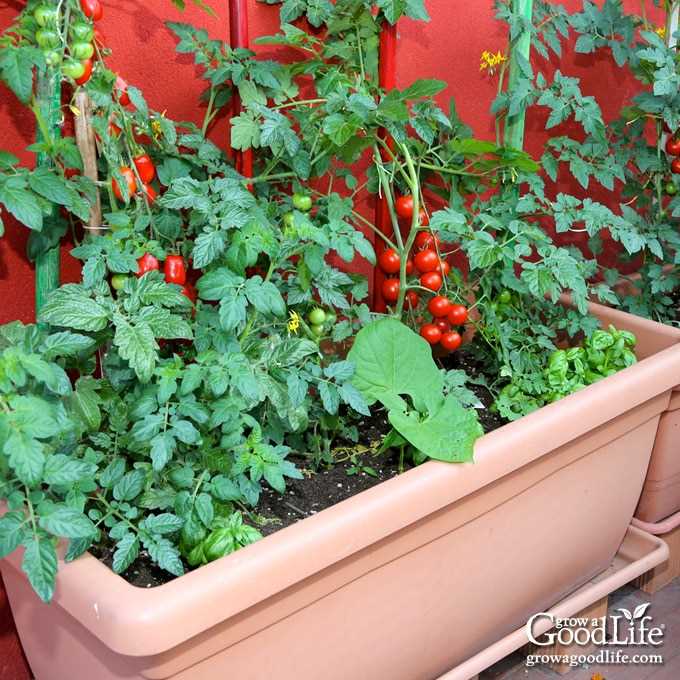
Make sure your containers are large enough to accommodate the root growth of your plants. Small containers can restrict root development and lead to stunted growth. As a general guideline, tomatoes, peppers, and cucumbers require containers with a minimum depth of 12 inches, while herbs can thrive in shallower containers.
Material:
There are various materials available for plant containers, each with their own advantages and disadvantages:
- Plastic containers are lightweight, affordable, and come in a variety of sizes and styles. However, they may not be as durable as other materials and can degrade from exposure to sunlight.
- Terra cotta containers are aesthetically pleasing and provide good insulation for plant roots. However, they can be heavy and prone to cracking in freezing temperatures.
- Fabric containers are lightweight, breathable, and allow for excellent drainage. They are a popular choice for growing vegetables and herbs. However, they may require more frequent watering compared to other materials.
Drainage:
Ensure that your containers have adequate drainage holes to prevent waterlogged soil, which can lead to root rot. It is also a good idea to place saucers or trays underneath the containers to collect excess water and prevent staining or damage to your balcony.
Mobility:
If you plan on moving your containers frequently or if your balcony has limited space, consider using containers with built-in wheels or lightweight materials for easier transportation.
Number of Plants:
Determine the number of plants you would like to grow and choose containers that can accommodate them comfortably without overcrowding. Overcrowded plants can compete for resources and inhibit proper growth.
By considering these factors, you can select the right containers for your plants, ensuring optimal growth and creating a beautiful balcony garden.
Watering and Fertilizing Your Balcony Garden
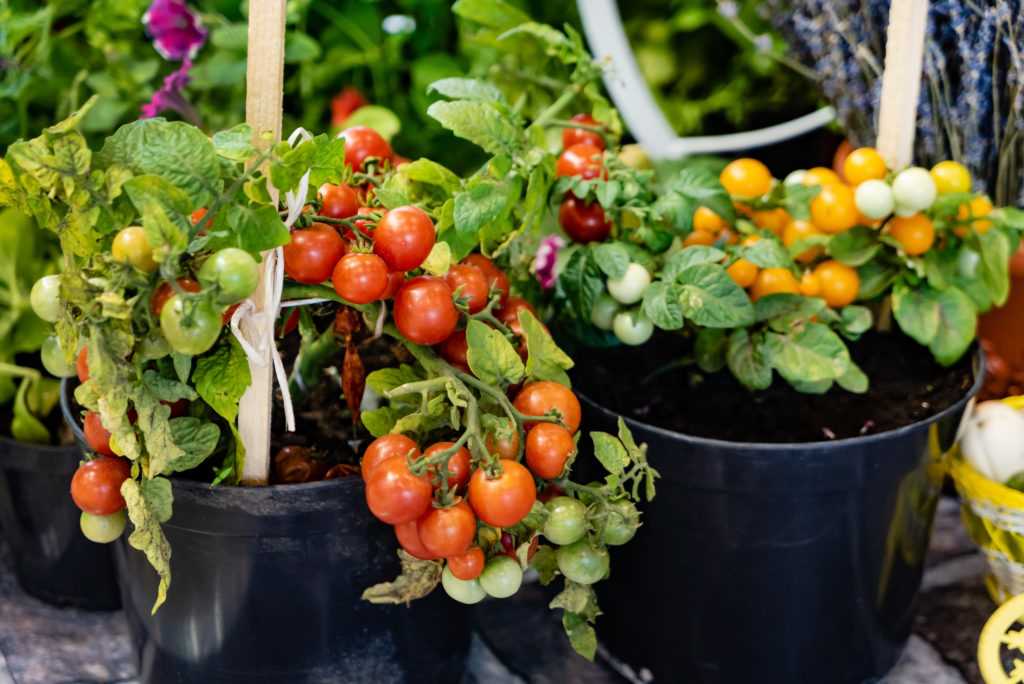
Watering Tips
- Check the moisture level of the soil regularly by sticking your finger about an inch deep into the soil. If it feels dry, it’s time to water.
- Water your plants in the morning or evening when the temperatures are cooler to minimize evaporation.
- Use a watering can or hose with a gentle spray nozzle to avoid damaging the plants.
- Ensure that water reaches the root zone of the plants by watering slowly and deeply.
- Avoid overwatering your plants as it can lead to root rot and other diseases. Make sure the soil is well-drained.
- Consider using self-watering containers or drip irrigation systems to maintain a consistent level of moisture in the soil.
Fertilizing Tips
- Choose a balanced, slow-release fertilizer specifically formulated for vegetables and herbs.
- Follow the instructions on the fertilizer package for the recommended amount and frequency of application.
- Apply the fertilizer to the soil around the plants, avoiding direct contact with the leaves.
- Mix the fertilizer into the soil before planting or use a liquid fertilizer for regular feeding during the growing season.
- Monitor the plants for any signs of nutrient deficiencies, such as yellowing leaves or stunted growth, and adjust the fertilizer application as needed.
- Consider using organic fertilizers and compost to improve the soil fertility and promote overall plant health.
Additional Tips
It’s important to maintain a consistent watering and fertilizing routine to ensure the success of your balcony garden. Regularly monitor the plants for any signs of stress or nutrient deficiencies, and make adjustments as necessary. Don’t forget to provide adequate drainage for your pots and containers to prevent waterlogging. If you’re unsure about the specific needs of your plants, consult a gardening expert or do some research to ensure you’re providing the best care for your balcony garden.
Pruning and Maintaining Your Plants
Proper maintenance and pruning are essential for the health and productivity of your balcony plants. Here are some tips to help you maintain and care for your tomatoes, peppers, cucumbers, and herbs:
1. Regular Watering:
Keep a consistent watering schedule to ensure that your plants receive the right amount of water. Check the soil moisture regularly and water whenever the top inch of soil feels dry. Avoid overwatering, as it can lead to root rot.
2. Fertilizing:
Feed your plants with a balanced fertilizer every two weeks during the growing season. This will provide them with the necessary nutrients to develop strong roots and yield a bountiful harvest. Follow the instructions on the fertilizer package for the correct application rate.
3. Pruning Tomato Plants:
Remove suckers, which are the small shoots that grow between the main stem and the side branches of tomato plants. This will encourage the plant to focus its energy on producing larger fruits. Additionally, prune any yellow or diseased leaves to prevent the spread of diseases.
4. Pruning Pepper Plants:
Pepper plants generally do not require much pruning. However, you can remove any damaged or diseased leaves and branches. This will improve air circulation and reduce the risk of fungal diseases.
5. Training Cucumber Plants:
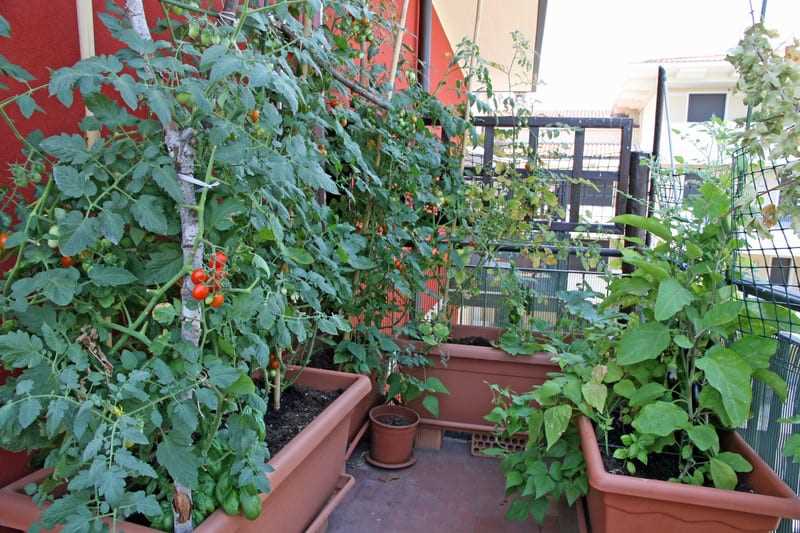
Cucumber plants can be trained to grow vertically by attaching them to a trellis or support structure. This will save space and keep the fruits off the ground, reducing the chance of disease. Gently tie the vines to the trellis as they grow.
6. Harvesting Herbs:
Regularly harvest the leaves of your herbs to promote bushier growth. This will ensure a continuous supply of fresh herbs throughout the season. Harvest herbs in the morning when their essential oils are most concentrated.
By following these pruning and maintenance tips, you can maximize the yield and longevity of your balcony plants. Remember to monitor your plants regularly for any signs of pests or diseases and take appropriate action to protect them.
Dealing with Pests and Diseases
Growing plants on your balcony can come with its fair share of challenges, including dealing with pests and diseases. However, with the right knowledge and strategies, you can prevent and manage these issues effectively.
1. Prevention
Prevention is the key to keeping your plants healthy and pest-free. Here are some preventive measures you can take:
- Choose disease-resistant varieties: When selecting plants, look for varieties that are known for their resistance to common diseases in your area.
- Practice good hygiene: Make sure to clean your pots or containers, tools, and hands regularly to prevent the spread of diseases.
- Provide proper care: Give your plants the right amount of water, sunlight, and nutrients to keep them healthy and strong.
- Monitor your plants: Regularly inspect your plants for any signs of pests or diseases, such as discolored leaves, spots, or wilting.
2. Natural Pest Control
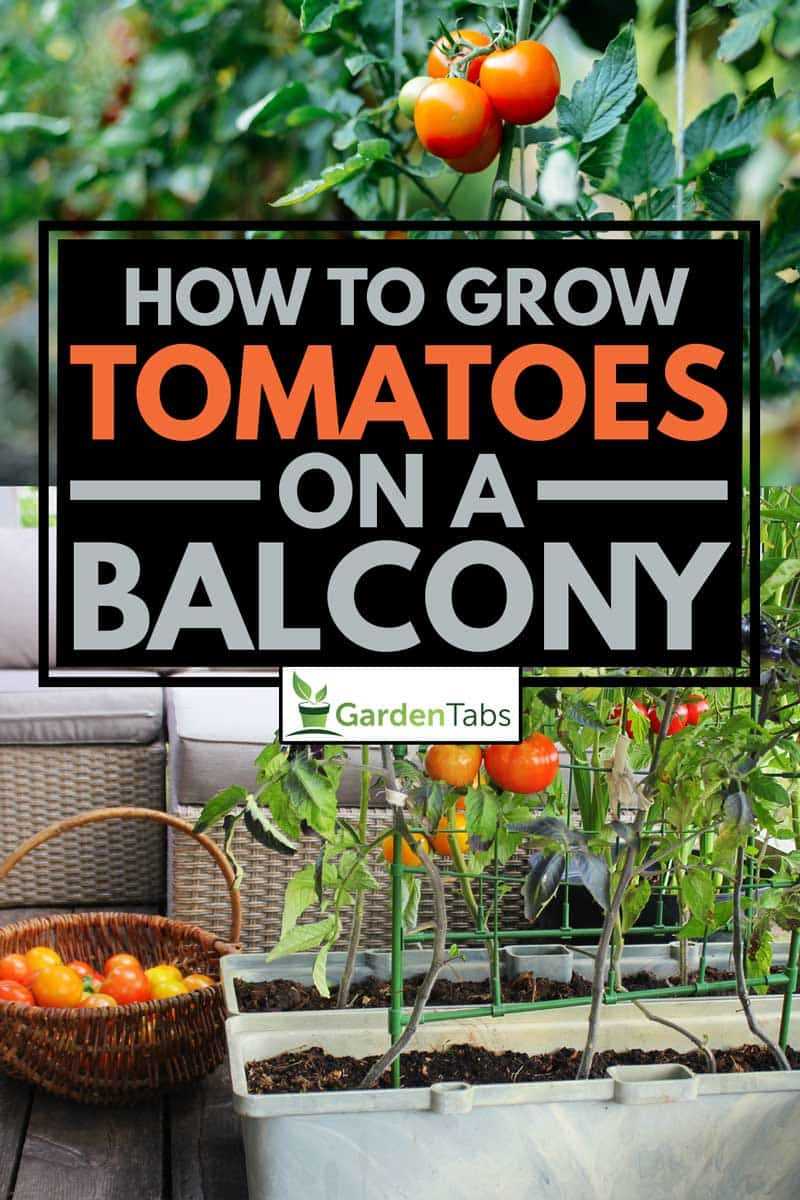
If you notice pests on your plants, there are several natural methods you can use to control them:
- Hand-picking: Inspect your plants frequently and remove any pests you find by hand. This can be effective for larger pests like caterpillars or beetles.
- Beneficial insects: Introduce natural predators like ladybugs or lacewings to your balcony garden. These insects feed on pests and help control their populations.
- Neem oil: Neem oil is a natural pesticide that can be mixed with water and sprayed on your plants to deter pests.
- Organic insecticidal soap: Use insecticidal soap made from natural ingredients to control soft-bodied insects like aphids or mealybugs.
3. Common Diseases
Here are some common diseases that can affect your balcony plants and how to manage them:
| Disease | Symptoms | Management |
|---|---|---|
| Leaf spot | Dark, circular spots on leaves | Remove and destroy affected leaves, maintain proper air circulation |
| Powdery mildew | White, powdery patches on leaves | Prune affected areas, improve air circulation, avoid overhead watering |
| Root rot | Wilting, yellowing leaves, rotting roots | Avoid overwatering, improve drainage, replant in fresh soil |
| Tomato blight | Brown spots on leaves, rotting fruit | Remove and destroy infected plants, practice crop rotation |
By following these preventive measures and using natural pest control methods, you can effectively manage pests and diseases in your balcony garden. Remember to stay vigilant and take prompt action at the first sign of trouble!
Harvesting and Enjoying Your Balcony Garden
Once your plants have grown and matured, it’s time to start enjoying the fruits of your labor. Here are some tips for harvesting and enjoying the produce from your balcony garden:
Harvesting Tomatoes, Peppers, and Cucumbers:
- Check your plants regularly for ripe fruits, as they can ripen quickly.
- To harvest tomatoes, gently twist them off the vine once they are fully colored and firm.
- Peppers should be harvested when they have reached their desired size and color. Use a clean pair of pruning shears to cut them off the plant.
- Cucumbers should be harvested when they are firm and a dark green color. Use a pair of pruning shears to cut them off the vine, leaving a small stem attached.
Harvesting Herbs:
- Herbs can be harvested frequently, as this encourages new growth.
- When harvesting herbs, cut the stems just above a set of leaves. This will promote branching and help the plant to fill out.
- Use fresh herbs in your cooking, or hang them up to dry for later use.
Enjoying Your Harvest:
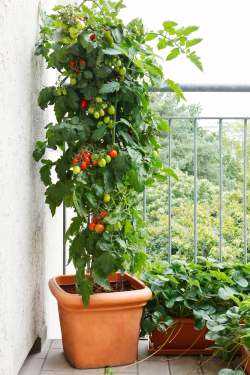
- Use your homegrown tomatoes, peppers, and cucumbers in salads, sandwiches, or as a healthy snack.
- Experiment with different flavors by adding your freshly harvested herbs to your favorite dishes.
- Share your bounty with friends and family, or use it as an opportunity to try out new recipes.
- Save seeds from your favorite plants to use for future planting seasons.
Remember to maintain a regular watering and fertilizing schedule to ensure continued growth and productivity from your balcony garden. With proper care, you can enjoy fresh, homegrown produce right from your own balcony!
“Question-Answer”
Can I grow tomatoes on my balcony?
Yes, you can definitely grow tomatoes on your balcony. Tomatoes are well-suited for container gardening and can thrive in pots or grow bags on a balcony. Just make sure they receive enough sunlight and water.
What is the best way to start growing peppers on my balcony?
To start growing peppers on your balcony, you can either sow seeds directly into the containers or purchase young plants from a nursery. It’s important to provide them with full sunlight, regular watering, and well-draining soil. Peppers also benefit from occasional fertilization.
Can I grow cucumbers on a small balcony?
Yes, you can grow cucumbers on a small balcony. However, it’s important to choose compact varieties that are suitable for container gardening. You will also need a trellis or support structure for the cucumbers to climb on and plenty of sunlight, water, and nutrient-rich soil.
What are some herbs that can be grown on a balcony?
There are several herbs that can be grown on a balcony, including basil, parsley, cilantro, thyme, rosemary, and mint. These herbs are ideal for small spaces as they can be grown in containers, require minimal maintenance, and can be used in cooking.
Do tomatoes need a lot of sunlight?
Yes, tomatoes require a lot of sunlight to grow and produce fruits. They need at least 6-8 hours of direct sunlight a day. Make sure to place your tomato plants in a spot on the balcony where they can receive ample sunlight throughout the day.
How often should I water my peppers and tomatoes on the balcony?
The watering frequency for peppers and tomatoes on the balcony depends on various factors such as temperature, humidity, and the size of the containers. As a general guideline, water the plants when the top inch of soil feels dry to the touch. However, be careful not to overwater as it can lead to root rot.
Can I use regular garden soil for growing vegetables and herbs on my balcony?
It is not recommended to use regular garden soil for growing vegetables and herbs on your balcony. Garden soil tends to be heavy and poorly-draining, which can lead to root rot and other issues. It’s best to use a well-draining potting mix or a specialized container gardening soil mix for optimal growth and health of the plants.







